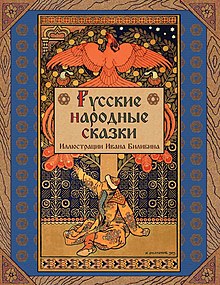Create Vampires/Eastern European Folklore
Vampires and Folk Beliefs
[edit | edit source]According to "Wikipedia:Vampire"[1]
The notion of vampirism has existed for millennia. Cultures such as the Mesopotamians, Hebrews, Ancient Greeks, Manipuri and Romans had tales of demons and spirits which are considered precursors to modern vampires. Despite the occurrence of vampiric creatures in these ancient civilizations, the folklore for the entity known today as the vampire originates almost exclusively from early 18th-century southeastern Europe,[2] when verbal traditions of many ethnic groups of the region were recorded and published. In most cases, vampires are revenants of evil beings, suicide victims, or witches, but they can also be created by a malevolent spirit possessing a corpse or by being bitten by a vampire. Belief in such legends became so pervasive that in some areas it caused mass hysteria and even public executions of people believed to be vampires.[3]
| References: |
|---|
| 1. Wikipedia contributors. "Vampire." Wikipedia, The Free Encyclopedia. Wikipedia, The Free Encyclopedia, 27 May. 2020. Web. 31 May. 2020. |
| 2. Silver, A., & Ursini, J. (1997). The Vampire Film: From Nosferatu to Interview with the Vampire (pp. 22–23). New York: Limelight Editions |
| 3. Cohen, pp. 271–74. |
Eastern European Folklore
[edit | edit source]
 |
 |
| Map of Europe in 1923 | Map of Eastern Europe |
 |
 |
Although stories about ghosts and demons may have haunted ancient society, stories of a uniquely original creature of the imagination began to be told, originating around parts of Eastern Europe. According to Wikipedia, "The Persians were one of the first civilizations to have tales of blood-drinking demons: creatures attempting to drink blood from men were depicted on excavated pottery shards." [Marigny, p. 14.]
Section From Wikipedia: Eighteenth Century Vampire Controversy
During the 18th century, there was a frenzy of vampire sightings in Eastern Europe, with frequent stakings and grave diggings to identify and kill the potential revenants. Even government officials engaged in the hunting and staking of vampires.[4] Despite being called the Age of Enlightenment, during which most folkloric legends were quelled, the belief in vampires increased dramatically, resulting in a mass hysteria throughout most of Europe.[5] The panic began with an outbreak of alleged vampire attacks in East Prussia in 1721 and in the Habsburg Monarchy from 1725 to 1734, which spread to other localities. Two infamous vampire cases, the first to be officially recorded, involved the corpses of Petar Blagojevich and Miloš Čečar from Serbia. Blagojevich was reported to have died at the age of 62, but allegedly returned after his death asking his son for food. When the son refused, he was found dead the following day. Blagojevich supposedly returned and attacked some neighbours who died from loss of blood.[4]
In the second case, Miloš, an ex-soldier-turned-farmer who allegedly was attacked by a vampire years before, died while haying. After his death, people began to die in the surrounding area and it was widely believed that Miloš had returned to prey on the neighbours.[6][7] Another infamous Serbian vampire legend recounts the story of a certain Sava Savanović, who lives in a watermill and kills and drinks blood from the millers. The character was later used in a story written by Serbian writer Milovan Glišić and in the Yugoslav 1973 horror film Leptirica inspired by the story.[8]
The two incidents were well-documented. Government officials examined the bodies, wrote case reports, and published books throughout Europe.[7] The hysteria, commonly referred to as the "18th-Century Vampire Controversy", raged for a generation. The problem was exacerbated by rural epidemics of so-called vampire attacks, undoubtedly caused by the higher amount of superstition that was present in village communities, with locals digging up bodies and in some cases, staking them.[9]
| Wikipedia: Eighteenth century vampire controversy |
|---|
| 4. Barber, pp. 5–9. |
| 5. Cohen, pp. 271–74. |
| 6. Jøn, A. Asbjørn (2003). "Vampire Evolution". METAphor (3): 20. Retrieved 20 November 2015. |
| 7. Barber, pp. 15–21. |
| 8. Ruthven, Suzanne (2014). Charnel House Blues: The Vampyre's Tale. John Hunt Publishing. ISBN 978-1-78279-415-8. |
| 9. Hoyt, pp. 101–06 |
